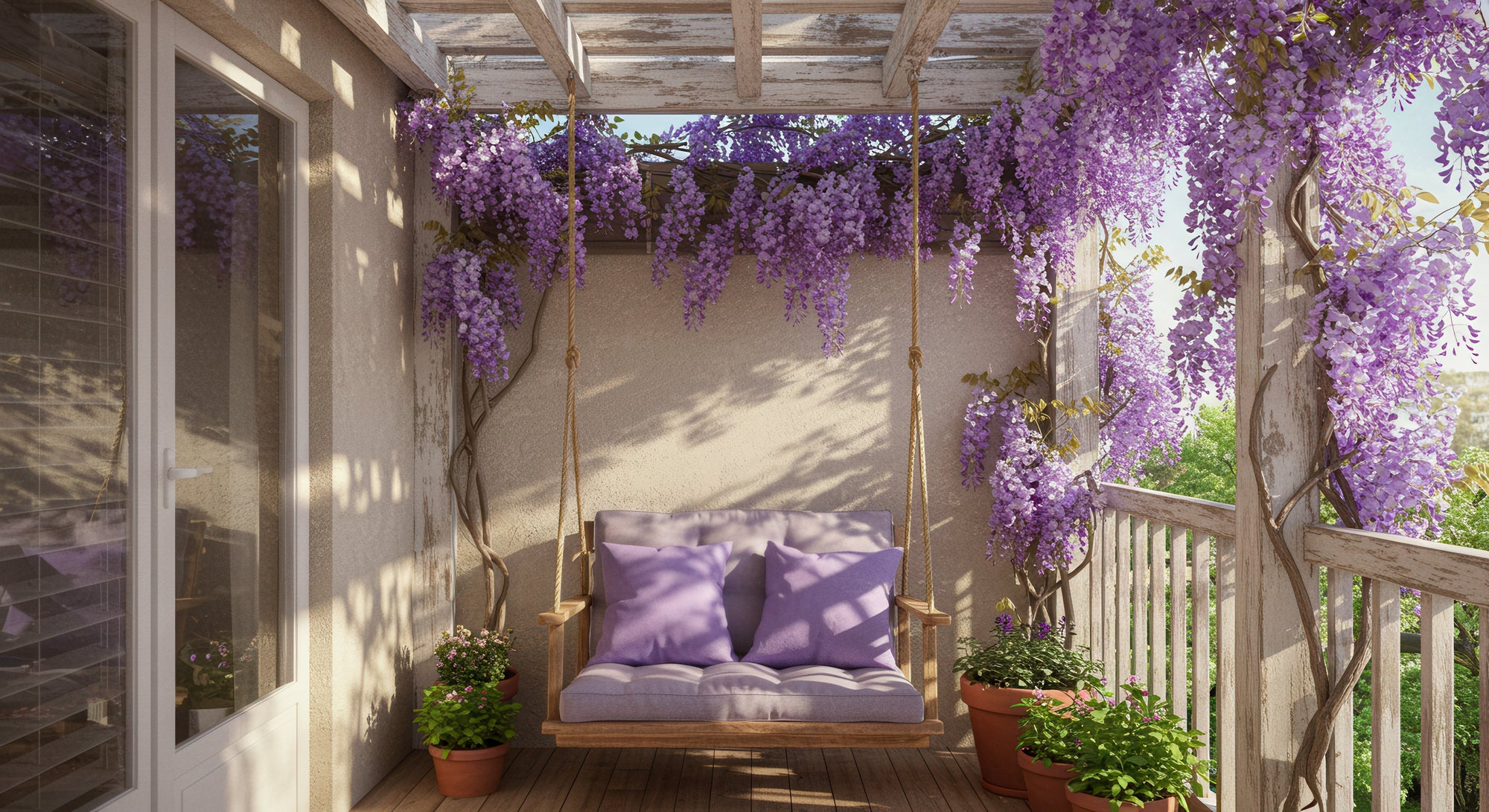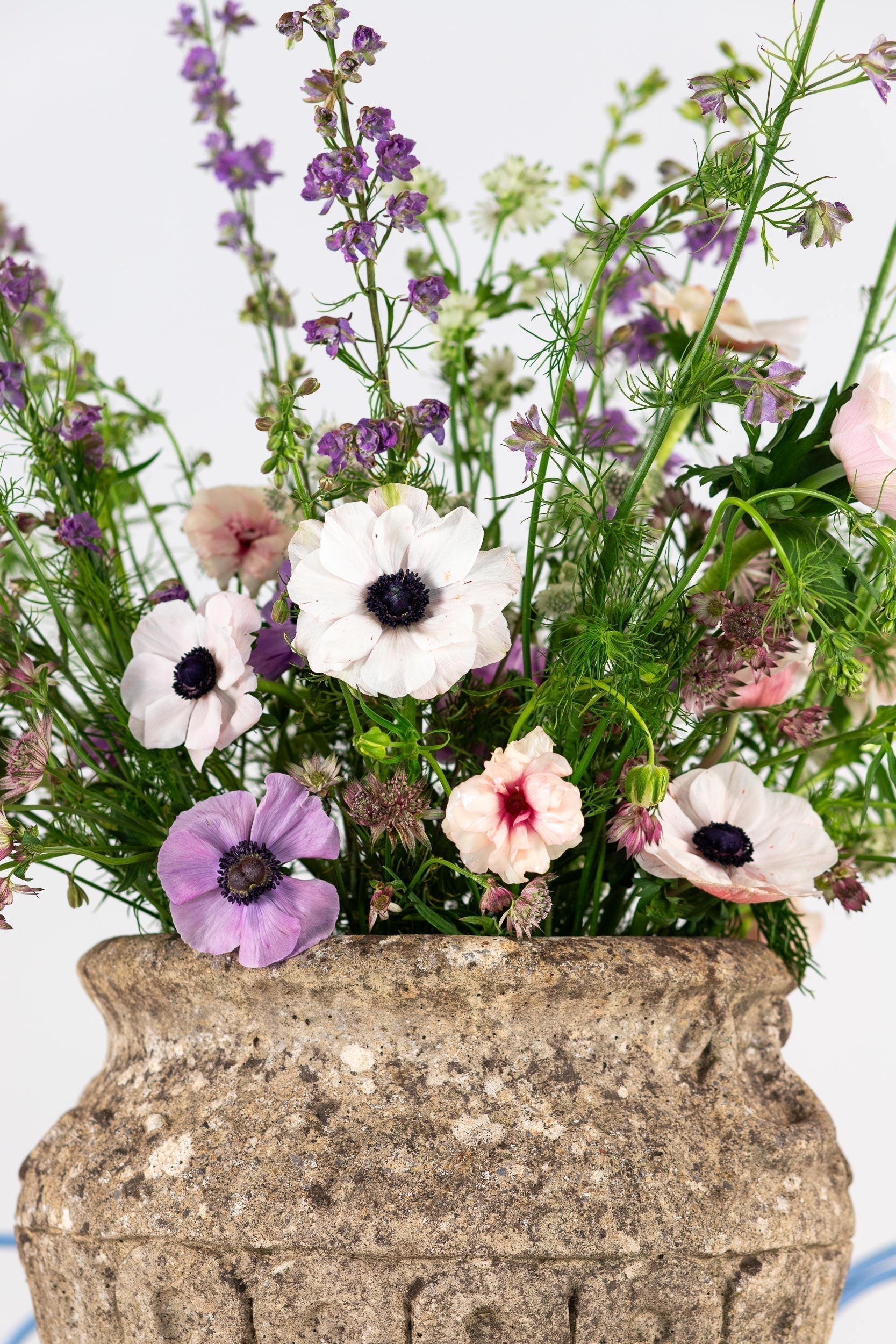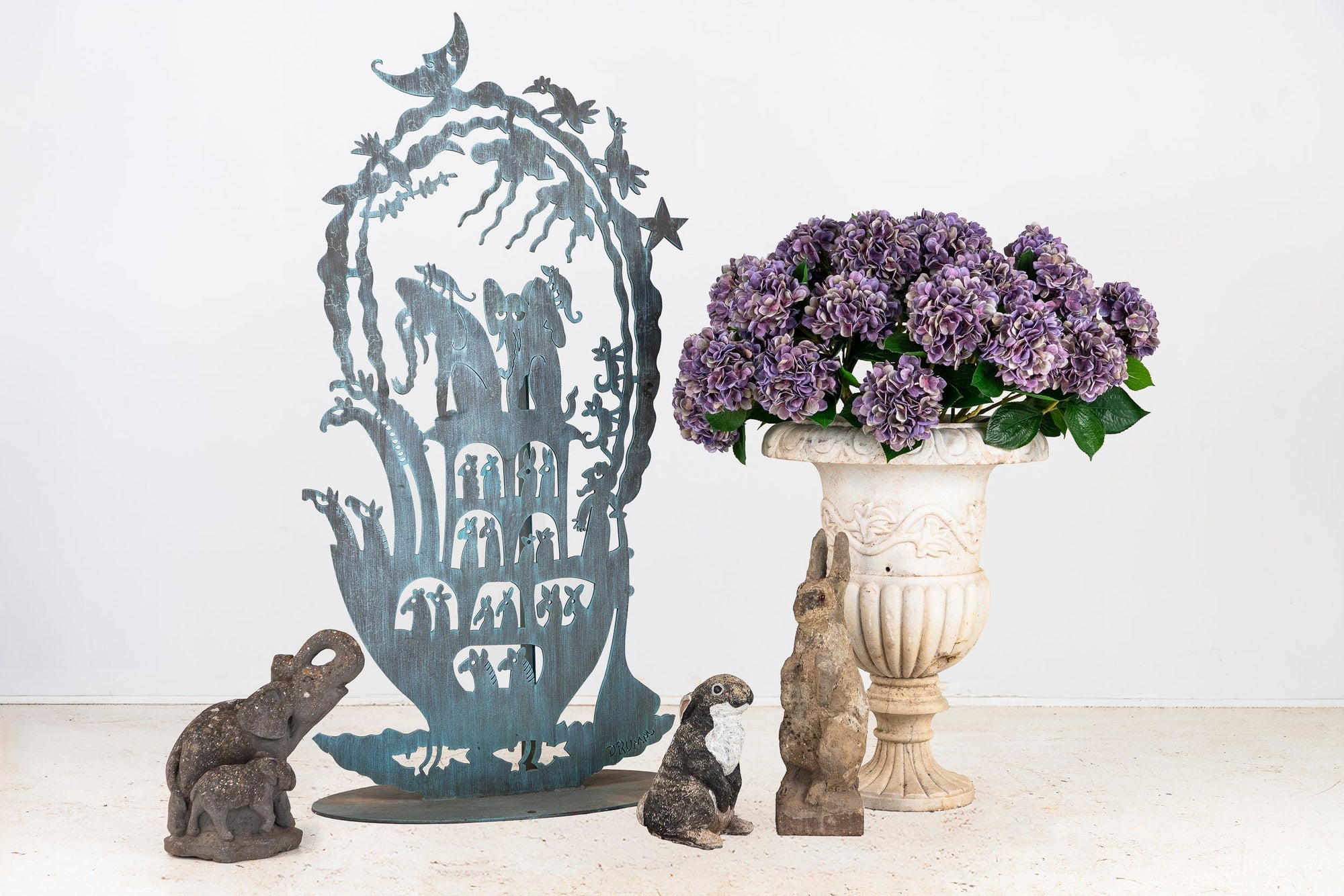Credit: Discoveries from The Lifestyle Historian
The pergola’s earliest examples appeared in the gardens of Ancient Egypt, where wooden frameworks supported vines that provided shade and cooling, a necessity in desert climates. While wonderfully functional, these structures also held ceremonial significance in temple gardens designed to represent earthly paradises.
The word “pergola” itself comes from the Latin pergula, meaning a projecting eave. By the Italian Renaissance, pergolas had evolved into architectural statements in elite gardens, especially in Florence and Rome. These were grand structures made from stone and timber, often covered in grapevines or flowering plants. They embodied classical ideals such as symmetry, proportion, and harmony with the natural world.
Over time, pergolas began to flourish across Europe. In France, they became part of the formal jardin à la française style that is highly symmetrical, controlled, and elegant. In England, the rise of the Romantic and Picturesque garden in the 18th century brought softer, more organic uses of pergolas, often designed to evoke ancient ruins or poetic scenes. Even Thomas Jefferson incorporated pergola-like colonnades at Monticello, blending classical influences with American flair.
By the Victorian era, pergolas were popular features in leisure gardens, often hosting tea parties or providing shade for contemplative walks. Now, pergolas cover a multitude of seating and entertaining styles like our Bauhaus Folding Bench, a beech wood folding bench made in 1930s Germany.

Bauhaus Folding Bench
Did Pergolas Ever Go Out of Style?
Not quite, though their visibility and perceived necessity have fluctuated.
In the post-WWII suburban boom, especially in the U.S., garden design leaned toward low-maintenance yards, patios, and fencing. The ornate, classical pergola was often considered excessive or impractical. Simpler trellises or arbors remained, but pergolas were seen as more of a luxury feature.
It wasn’t until the late 1990s and early 2000s that pergolas began re-emerging in mainstream garden design, this time reframed not as garden relics but as essential outdoor living elements. Homeowners were building decks, patios, and outdoor kitchens so pergolas naturally followed as a way to define these new spaces while providing shade and ambiance.
Then, in the early 2020s, the outdoor living movement accelerated dramatically, driven by lifestyle changes, particularly during the COVID-19 pandemic. People turned their gardens into dining rooms, offices, and wellness retreats. Pergolas were once again recognized for their charm and usefulness.
Why Pergolas Endure in the Modern Garden
As modern life continues to be increasingly digital and fast-paced, pergolas offer a pause button, a way to carve out a meaningful, tactile experience in the natural world. They create a sense of enclosure without walls, inviting us to slow down, breathe, and connect. Consider bordering these lovely outdoor frames with antique urns or planters such as our Vintage Acanthus Leaf Pedestal Planter to enhance this connection with nature. This cast stone acanthus leaf planter comes as a pair and is from France, made in the 20th century. Intricate foliage makes up the beautiful design and the sturdy architectural pots are ideal for elevating greenery for a striking landscape.

Vintage Acanthus Leaf Pedestal Planter for Garden
The Rise of Outdoor Living
Today’s pergolas can be integrated into the architecture of homes as outdoor extensions, complete with lighting, curtains, heating, and even smart-home features. They define space and purpose while also being decorative. We recommend placing our Round Metal Acanthus Leaf Motif Garden Table underneath your pergola for both practical and elegant outdoor dining. This 1960s Swedish cast aluminum garden dining table features a beautifully detailed round top adorned with a repeating acanthus leaf and scrollwork design, accented by a scalloped edge. A second tier connects the four legs, providing stability and visual balance.

Round Metal Acanthus Leaf Motif Garden Table, Sweden 1960s
A Material Renaissance
While traditional pergolas were built from timber or stone, modern versions use sustainable wood, powder-coated steel, composite materials, and even solar-integrated designs. The range of styles now fits minimalist homes as easily as cottage gardens. There’s also a growing trend in reclaiming antique pergola elements. Think salvaged stone columns from European estates, or wrought-iron scrollwork from 19th-century orangeries that add authenticity as well as a layered sense of history to the modern garden. Fun fact! In ancient Rome, shaded walkways supported by pergola-like structures called peristyles were considered essential to self-improvement and reflection.
Designing Your Own Garden Sanctuary
If you're planning to build or restore a pergola, think about more than just the structure. Consider the experience it will offer by asking yourself:
- Will this be a dining area, a meditative retreat, or a space for climbing roses and hummingbirds?
- Do you want it to blend with your home’s architecture or stand as a focal piece
- What plants will you train across the beams? Wisteria for drama, grapevines for Mediterranean vibes, or native species for pollinator support?
Don’t forget the details such as café lighting, outdoor curtains, reclaimed wood, or sculptural elements from Modern Antiquarian, all of which can elevate your pergola from functional to unforgettable. Remember that when you include a pergola as part of your garden design, you are shaping space in a way that invites nature, people, and design to coexist beautifully.



